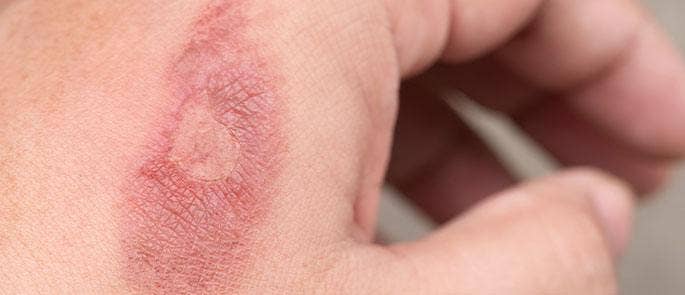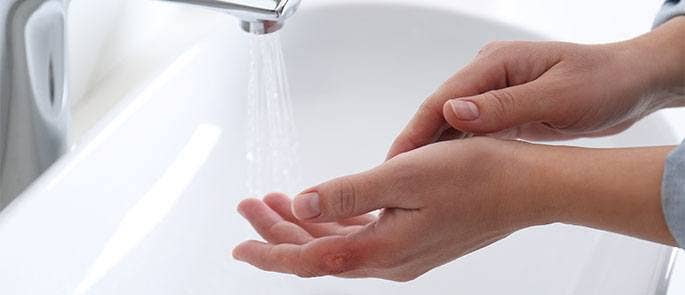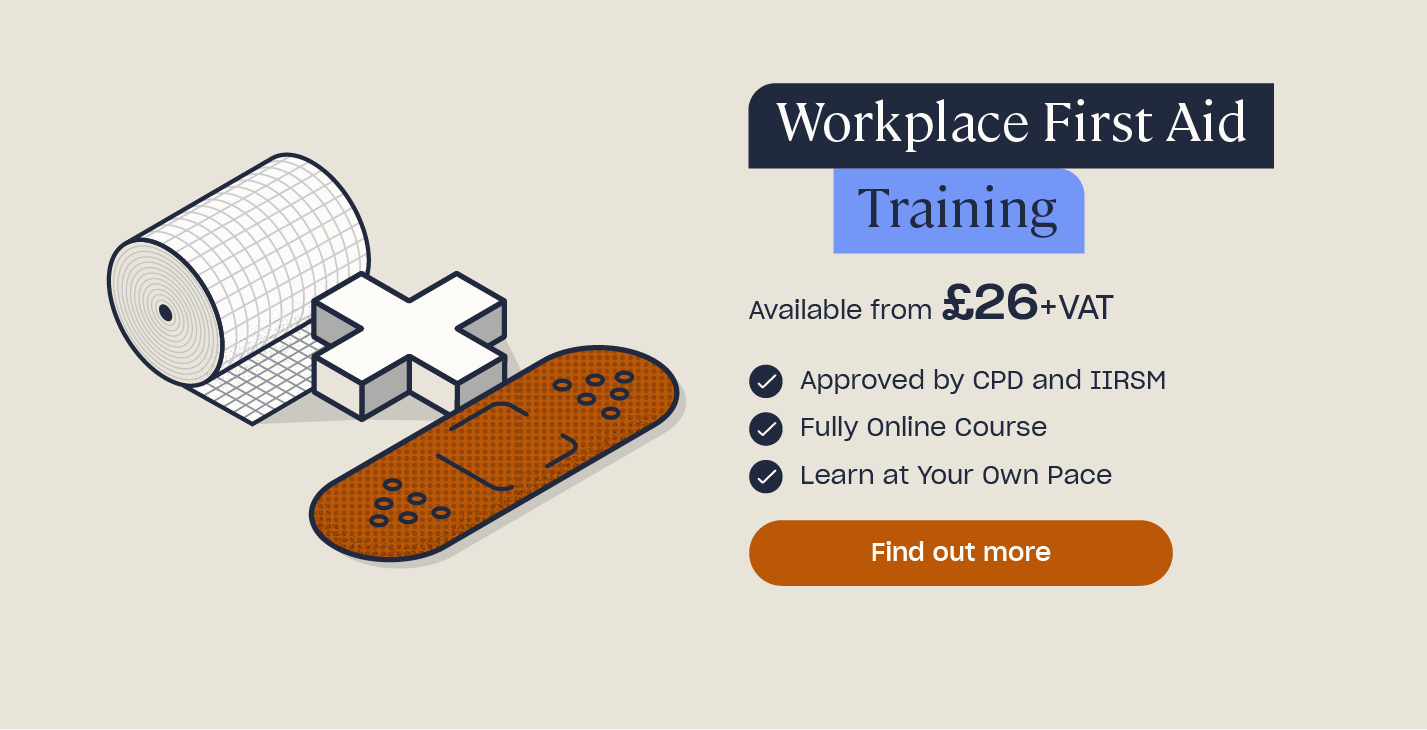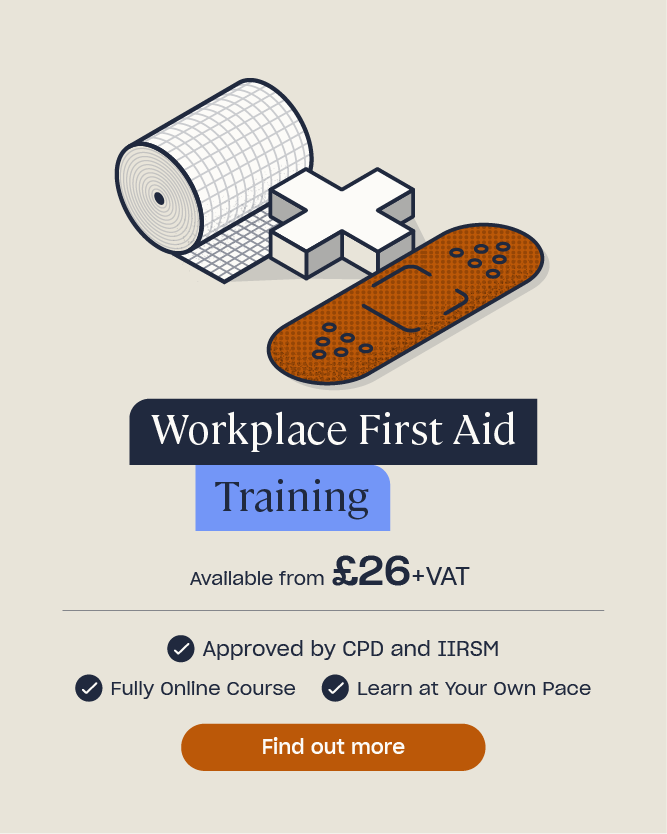Burns and Scalds: First Aid Advice
Having basic first aid knowledge of how to deal with minor burns and scalds is essential, whether in the workplace or at home. Accidental burns are a common injury and can be painful and long-lasting if not dealt with quickly and correctly. In this article, we’ll outline the difference between burns and scalds, look at some of the common causes and provide guidance on how to treat burns and scalds at work or at home.
What are Burns and Scalds?
Burns and scalds are painful injuries caused by heat damage to the skin. Depending on their severity, both burns and scalds can be identified by red skin, peeling skin, blisters and swelling, or even white/charred skin in more serious cases.
Minor surface burns and scalds can be treated using appropriate first aid knowledge at home or in the workplace. However, more severe burns will require immediate medical attention.
The difference between burns and scalds is:
- A burn is caused by dry heat – such as a hot surface, fire or the sun.
- A scald is caused by wet heat – such as steam, boiling water or hot liquid.

Causes of Burns and Scalds
Some common causes of burns include:
- Touching a hot iron sole plate.
- Hot ovens, including baking trays and oven shelves.
- Gas burners and open flames.
- Lit matches and candles.
- Cigarettes.
- Hot metal or glass surfaces or objects.
- Overheated electrical equipment.
- Contact with corrosive chemicals.
- Contact with a live electrical current.
- Sun exposure.
Some common causes of scalds include:
- Boiling water from the kettle.
- Steam from a kettle or pan.
- Hot drinks, like tea and coffee.
- Hot water straight from the tap.
- Hot or boiling oil.
Different Types of Burns and Scalds
The NHS explains four main types of burns and scalds:
- Superficial epidermal burns – the outer layer of the skin will appear red and slightly swollen. It might be painful but there is no blistering. This type of burn can be treated with basic first aid.
- Superficial dermal burns – the outer layer of skin and parts of the tissue underneath are damaged and the skin will appear pale pink with small blisters. It is likely to be painful but can usually be treated with basic first aid.
- Deep dermal or partial thickness burns – both the outer layer of skin and the tissue underneath are damaged and the skin will appear red and blotchy. The skin may also become swollen, blistered, moist or dry and it can be very painful or even painless. This type of burn requires immediate medical attention,
- Full thickness burns – all layers of the skin are damaged, including the deeper layers of fat and tissue below the surface. The skin may be burnt away and look pale or blackened with a leathery or waxy texture. This type of burn can often be painless and requires immediate medical attention.
Alongside thermal burns and scalds caused by dry or wet heat, other types of burns are:
- Chemical burns – caused by an acid, alkaline or caustic substance coming into contact with the skin, eyes or organs, triggering a chemical reaction on the skin’s surface that can be very damaging and even fatal.
- Electrical burns – caused by contact with a live electrical current. When the electrical current passes through the body, it heats the skin tissue and internal organs, sometimes causing severe harm.
- Radiation burns – caused by high exposure to radiation, including X-rays and UV rays. This type of burn can sometimes take days to show physical symptoms, unlike other types of burns where the signs are immediately evident.
Looking to Learn More?
Do you need to be trained in first aid for work? Then take a look at our Workplace First Aid Course which teaches you how to respond to accidents, injuries and emergency situations in the workplace. If you’re already trained in emergency first aid, then consider our First Aid at Work Refresher Training and Emergency First Aid at Work Refresher Training courses.
How to Treat Burns and Scalds
Burns and scalds are treated in the same way and your first priority should be to cool down the affected area as quickly as possible.
To treat burns and scalds, follow the first aid advice below:
- Where possible, move the casualty away from the source of heat to prevent further burn injuries to them or to you.
- Remove any loose clothing or jewellery near to the burnt area of skin, but do not remove anything that has stuck to the skin.
- Use cool or lukewarm running water to cool the burn for at least 20 minutes. Do not use ice, creams or greasy substances.
- Cover the burnt area of skin, ideally with a layer of cling film or a clean plastic bag, and raise the affected area to help reduce any swelling.
- Keep the casualty warm and comfortable, avoiding touching the burnt area, and give them painkillers if needed.
Remember, if the casualty has received a severe, deep burn, a chemical burn or an electrical burn, you should contact the emergency services immediately for further medical care. Keep the casualty calm and reassured until the emergency services arrive.

Burns and scalds can be very painful injuries and are often caused by accidents with hot surfaces and liquids. Whether the burn occurs at home or in the workplace, it’s important to have the right first aid knowledge so you know how to respond and treat the burn or scald quickly and appropriately.
Further Resources:
- Workplace First Aid Course
- What Should Be In A First Aid Kit?
- How to Conduct a First Aid Needs Assessment: Free Template







